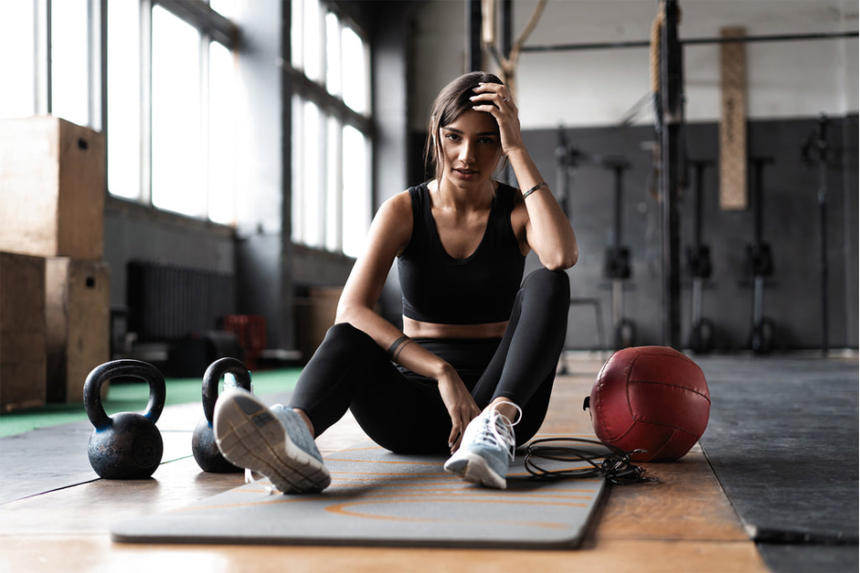Introduction:
In the fast-paced and often sedentary world we live in, incorporating regular workouts into our routines has become paramount for maintaining physical health, mental well-being, and overall vitality. This comprehensive guide aims to explore the multifaceted aspects of workouts, from the importance of exercise to different workout styles, tips for motivation, and the profound impact on both the body and mind.
I. The Importance of Regular Exercise:
Physical Health Benefits:
Regular exercise is the cornerstone of a healthy lifestyle, offering a myriad of benefits for the body. From cardiovascular health and weight management to enhanced flexibility and muscle strength, exercise plays a crucial role in preventing chronic diseases and promoting overall well-being.
Mental Health Benefits:
The connection between physical activity and mental health is undeniable. Exercise has been shown to reduce stress, alleviate symptoms of anxiety and depression, and enhance cognitive function. The release of endorphins during exercise contributes to a positive mood and improved mental clarity.
Immune System Boost:
Engaging in regular workouts also fortifies the immune system, making the body more resilient to illnesses and infections. Moderate and consistent exercise has been linked to a reduced risk of chronic conditions, such as type 2 diabetes and certain cancers.
II. Types of Workouts:

Cardiovascular Exercise:
Cardiovascular or aerobic exercise is essential for maintaining heart health and burning calories. Activities such as running, cycling, swimming, and dancing fall under this category. Cardio workouts enhance endurance, boost metabolism, and contribute to weight management.
Strength Training:
Strength training, involving resistance exercises with weights or resistance bands, is crucial for building and toning muscles. This type of workout increases metabolism, improves bone density, and enhances overall strength, promoting functional fitness.
Flexibility and Mobility:
Incorporating flexibility exercises like yoga or Pilates into your routine improves joint health, increases range of motion, and prevents injuries. Flexibility workouts also aid in relaxation, stress reduction, and posture improvement.
High-Intensity Interval Training (HIIT):
HIIT involves short bursts of intense exercise followed by periods of rest or lower-intensity activity. This type of workout is efficient for calorie burning, improving cardiovascular fitness, and increasing metabolic rate even after the workout is completed.
III. Tailoring Workouts to Personal Goals:
Setting Realistic Goals:
Understanding personal fitness goals is essential for designing effective workout routines. Whether aiming for weight loss, muscle gain, increased flexibility, or enhanced endurance, setting realistic and measurable goals provides a clear roadmap for progress.
Creating a Balanced Routine:
A well-rounded workout routine combines different types of exercises to target various muscle groups and aspects of fitness. Incorporating both cardiovascular and strength training, along with flexibility exercises, ensures comprehensive fitness development.
Gradual Progression:
To avoid injury and maintain motivation, it’s crucial to progress gradually in intensity and duration. Gradual progression allows the body to adapt, reducing the risk of overuse injuries and providing a sustainable approach to long-term fitness.
IV. The Role of Nutrition in Workouts:
Pre-Workout Nutrition:
Fueling the body with the right nutrients before a workout is crucial for optimal performance. Consuming a balanced meal or snack that includes carbohydrates, protein, and a moderate amount of healthy fats provides the energy needed for sustained physical activity.
Hydration:
Staying adequately hydrated is paramount for optimal exercise performance. Dehydration can lead to fatigue, cramps, and reduced endurance. Drinking water throughout the day and replenishing fluids during and after workouts is essential.
Post-Workout Nutrition:
After a workout, the body needs nutrients to repair and replenish. A combination of protein and carbohydrates aids in muscle recovery and replenishes glycogen stores. Including sources of lean protein and complex carbohydrates in post-workout meals or snacks supports the body’s recovery process.
V. Motivation and Overcoming Obstacles:
Setting a Routine:
Establishing a consistent workout routine helps build a habit, making it easier to stay motivated. Schedule workouts at a time that aligns with your daily routine, and treat them as non-negotiable appointments.
Finding Enjoyable Activities:
Choosing activities you enjoy significantly contributes to motivation. Whether it’s dancing, hiking, or team sports, finding joy in the workout makes it more likely to become a sustainable part of your lifestyle.
Accountability:
Working out with a partner, joining a fitness class, or hiring a personal trainer can provide a sense of accountability. Having someone to share the journey with and hold you responsible for your fitness goals increases motivation.
Variety in Workouts:
Boredom can be a significant obstacle to maintaining a workout routine. Introducing variety by trying different exercises, classes, or outdoor activities keeps things interesting and challenges the body in new ways.
Monitoring Progress:
Tracking progress, whether through fitness apps, journals, or measurable goals, provides a tangible sense of accomplishment. Celebrate milestones, no matter how small, to stay motivated and focused on long-term success.
VI. Incorporating Workouts into Daily Life:
Active Commuting:
Incorporate physical activity into your daily routine by opting for active commuting methods such as walking or cycling. This not only adds extra movement but also contributes to environmental sustainability.
Desk Exercises:
For those with sedentary jobs, incorporating desk exercises can help break up long periods of sitting. Simple stretches, chair squats, and seated leg lifts can be done discreetly to promote circulation and reduce stiffness.
Lifestyle Changes:
Small lifestyle changes, such as taking the stairs, parking farther away, or opting for a standing desk, contribute to overall daily activity levels. These cumulative efforts make a significant impact on physical fitness over time.
Conclusion:
Workouts are not just a means of physical exertion; they are a gateway to improved health, enhanced mental well-being, and a more vibrant and fulfilling life. By understanding the various types of workouts, tailoring routines to personal goals, prioritizing nutrition, staying motivated, and seamlessly integrating physical activity into daily life, individuals can embark on a journey towards sustainable fitness. The transformative power of workouts extends far beyond the physical, permeating into mental, emotional, and social aspects of life. Embrace the journey, celebrate achievements, and let the power of workouts unlock your full potential.







